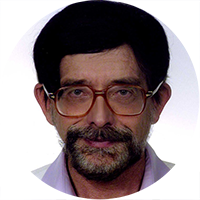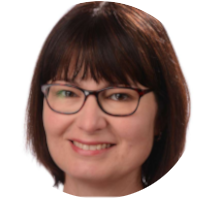The highest quality of Computer Science education, research and development activities at MIPT is acknowledged by the fact that in 2020 MIPT was chosen to host the Finals of the World’s most prestigious programming competition for university students: ICPC.
During the contest the ICPC team has interviewed Prof. Andrei Raigorodskii, the head of the MIPT School of Applied Mathematics and Informatics.
The video interview is available on YouTube.
Moscow Institute of Physics and Technology (MIPT) is a Russian analogue of MIT(USA) and USTC (China). It was established in 1948 and its aim was to produce elite engineers. The following was done to achieve this goal:
These strong foundations resulted in the leading position that MIPT have been occupying in the national academic landscape from its birth until the current times:
Reputation
MIPT has a nation-wide reputation and the best research labs, design engineering bureaus and businesses are competing to employ MIPT graduates. Specialists consider MIPT as one of the very best Russian Universities.
Researchers
A significant part of the alumni take the scientific path and become fundamental researchers. Their education allow them to become the world leading scientists, like Nobel Prize Winners Andre Gaim and Konstantin Novoselov, the discoverers of graphene.
The MIPT School of Applied Mathematics and Computer Science builds on the concepts and values that powered the reputation of MIPT for decades, while bearing in mind the challenges and opportunities of the current digital Millenium. This approach leads to the following features of the School:
1. Mathematics is at the uncompromisingly high level.
2. Top-notch Computer Science courses that allow the students to easily enter the job market right after the graduation.
3. Modern artificial intelligence applications require the solid knowledge of discrete mathematics, probability theory and statistics, so these subjects get special attention in the curriculum, replacing the courses on physics that were more traditional to other MIPT departments.
4. School employs top professors and seminars are taught by researchers at the Phd level and above.
5. Students are taking internships in renown IT companies (such as Huawei and Yandex — Russian analogue of Google), banks (such as Sberbank, the largest Russian bank) and other industrial partners of MIPT that work with big data, artificial intelligence and high-load systems. Students start working on real projects as early as the 3rd year of education, so by the graduation they already have sound industrial experience records.
6. Some unique activities are available for the students inclined to try on an interpreneur’s hat. A notorious example is the innovation practicum where students are taught how to build startups, organize teamwork and sell their ideas.
7. Students interested in competitive programming have an opportunity to participate in ACM ICPC Olympiads, where teams of the School are always among the winners.
Our results
As a result graduates have the opportunity to stay in Russia in IT company or to go abroad (say to USA) where their salary starts at $15000 per month.
Students can also take the scientific path and do the research in artificial intelligence, big data and other hot areas.
About bachelor program
Information technologies power almost every technological achievement of the modern world. Yes, the cars would have been impossible without the invention of the wheel, but modern cars are as dependent on software and algorithms as they are dependent on basic mechanics: the car engine is controlled by a computer. Penicillin was discovered accidentally, but modern drugs are designed and tested by a well-thought computer-aided process. First merchants were brave travelers risking their lives travelling seas to brings goods to the people; modern superstores do not require their CEOs to risk their lives, but they do employ advanced algorithms to optimize the delivery. World wide web made it possible to replace paper mail with electronic messaging. We are given product recommendations on the Internet not by people, but by machine learning algorithms. All that technologies are making our life easier, but require hard and super-interesting work by the people that design them. Do you want to be among the people that shape the future technologies? Then read on!
Most of the modern technologies require either unhuman speed of reaction or unhuman quantities of data to be processed. This is where computers come into play. But someone needs to tell the computer how to solve the problem, and these people are programmers. They take algorithms (“recipes”) and express them in the language that computers understand, a programming language. Programmers can be compared to cooks. But who designs and tunes the recipes? Who are the chefs? These are computer scientists, the people who create new algorithms, staying at the cutting edge. This is a highly rewarding profession, but it doesn’t come in a snap: one cannot become a computer scientist just by completing a bunch of online courses and bootcamps. Are you not afraid of hard work to get to the frontiers of the modern computer science? Come join us at MIPT!
We are proud to have one of the strongest Information Technologies bachelors programs in Russia, the country well known for the quality of its STEM graduates. One of the advantages of this program is the balance between the fundamentals and the applied facet of the computer science. The program includes courses on modern programming languages and computer architecture, but what makes it special is that significant part of the program is devoted to mathematics that drives the classical and cutting edge algorithms. Commonly it is referred to as discrete mathematics, the part of mathematics that studies discrete objects. To get a sense of what it is, recall that the image on your smartphone screen is discrete — it is made of single illuminating dots called pixels, although when the pixels are small enough, you have an impression of a continuous picture. Mathematics has always been the language of science, computers can only work with discrete data, so naturally discrete mathematics have become the enabling tool for the computer science. The terminology of discrete mathematics, such as sets, graphs, permutations, formal grammars, penetrates the vast majority of modern computer science research and development. The interplay between the theory and applications in computer science is undisputable: network design and logistics are enabled by graph theory, cryptography is enabled by number theory, information transmission is enabled by coding theory, and many more connections may be listed. Our graduates have both solid understanding of the theories within discrete mathematics, as well as of the ways these theories can be (and are) applied.
János Pach is a mathematician and computer scientist working in the fields of combinatorics and discrete and computational geometry. Pach received his Candidate degree from the Hungarian Academy of Sciences, in 1983, where his advisor was Miklós Simonovits. Since 1977, he has been affiliated with the Alfréd Rényi Institute of Mathematics of the Hungarian Academy of Sciences. He was Research Professor at the Courant Institute of Mathematical Sciences at NYU (since 1986), Distinguished Professor of Computer Science at City College, CUNY (1992-2011), and Neilson Professor at Smith College (2008-2009). In 2008, he joined École Polytechnique Fédérale de Lausanne as Professor of Mathematics.
Watch video invitation from János Pach
Gyula O.H. Katona is a Hungarian mathematician known for his work in combinatorial set theory, and especially for the Kruskal–Katona theorem and his beautiful and elegant proof of the Erdős–Ko–Rado theorem in which he discovered a new method, now called Katona's cycle method. Since then, this method has become a powerful tool in proving many interesting results in extremal set theory. He is affiliated with the Alfréd Rényi Institute of Mathematics of the Hungarian Academy of Sciences.
Watch video invitation from Gyula O.H. Katona
"MIPT is one of the strongest universities in Europe. Especially in Graph Theory, Combinatorics and their Applications.
This is why I did not hesitate a minute when I was asked in 2015 to join the new Master’s program. I accepted this offer with great pleasure. Since then I give each year a series of lectures on my favorite area: Extremal Set Theory. So, you do not know what it is? I give an example.
There are n people, members of a society. For different tasks they form committees. The democratic rule is that no committee can be a proper subset of another one. At most how many committees can be formed? If you chose this program, I will tell the answer in the first class. Extremal Set Theory has many other similar, but not so easy problems. But Combinatorics has many other, nice, interesting subfields. You can learn all of those from my excellent colleagues.
What is nice about Combinatorics? On the one hand it asks questions that can be explained to a highschool student between two bus-stops, though to answer the question might be very difficult, needing surprising ideas. On the other hand Combinatorics is in ``one step” from real life problems, it is really an applicable mathematics, I always enjoyed teaching these classes, since the audience consisted of smart, motivated young people from all around the world. And I had the impression that they liked that I taught them. In one case it was sure. A Chinese lady, after receiving her Master’s degree at MIPT, came to Budapest to continue her studies and she is now writing her PhD thesis under my supervision.
One more thing. From MIPT, within 30 minutes you can reach the center of an exciting, vibrant city: MOSCOW."
Nelly Litvak is professor in Algorithms for Complex Networks and has a background in Applied Probability and Stochastic Operations Research. She works on mathematical methods and algorithms for complex networks, such as social networks and the WWW. Real-life networks are modeled as random graphs, and algorithms are used to extract information from the massive network data.
The overall goal of her research is to extract value from (Big) Data, focusing on network data. Her research revolves around three main topics: Information extraction and predictions based on data, mathematical analysis of network characteristics and randomized algorithms. The first looks at defining and collecting the correct measurements and data for specific purposes and deducing networks from data. The second examines mathematical properties of algorithms in networks, for example, the famous PageRank that Google invented to rank web pages. The third looks at efficient algorithms for computing network characteristics when the complete network data is not available.
Watch video invitation from Nelly V. Litvak
Become MIPT student
Only 3 steps separate you from studying at Moscow Institute of Physics and Technology
c – common
f – faculty provided
p – practice
c – common
f – faculty provided
p – practice
c – common
f – faculty provided
p – practice
c – common
f – faculty provided
p – practice
c – common
f – faculty provided
p – practice
c – common
f – faculty provided
p – practice
c – common
f – faculty provided
p – practice
c – common
f – faculty provided
p – practice
How to apply
Collect the required documents
1. Filled-in application form: → FORM
2. Scanned copy of ID (passport), its notarized and, if necessary, legalized translation
3. High school diploma, its notarized and, if necessary, legalized translation
4. Proof of English proficiency (B2 or equivalent)
5. Educational awards and results of academic or scientific competitions (if you have)
Application deadline: mid-September, 2020
Submit your application
Submit your application by email with all the required documents. Email address: intoff@mipt.ru
interview
An online test. We’ll choose the date and time that fits both the applicant and the Admissions Committee.
When your application is approved, you will be notified in a Letter of Admission. For any additional information concerning application procedure, please contact MIPT International Students Office:
Tel: +7 (495) 408-7043
Email: intoff@mipt.ru
Tuition fee
Regular tuition fee for 2021 year is 320 000 roubles/year.
Russian state-provided grants are available.
 János Pach
János Pach Gyula O.H. Katona
Gyula O.H. Katona Nelly V. Litvak
Nelly V. Litvak








